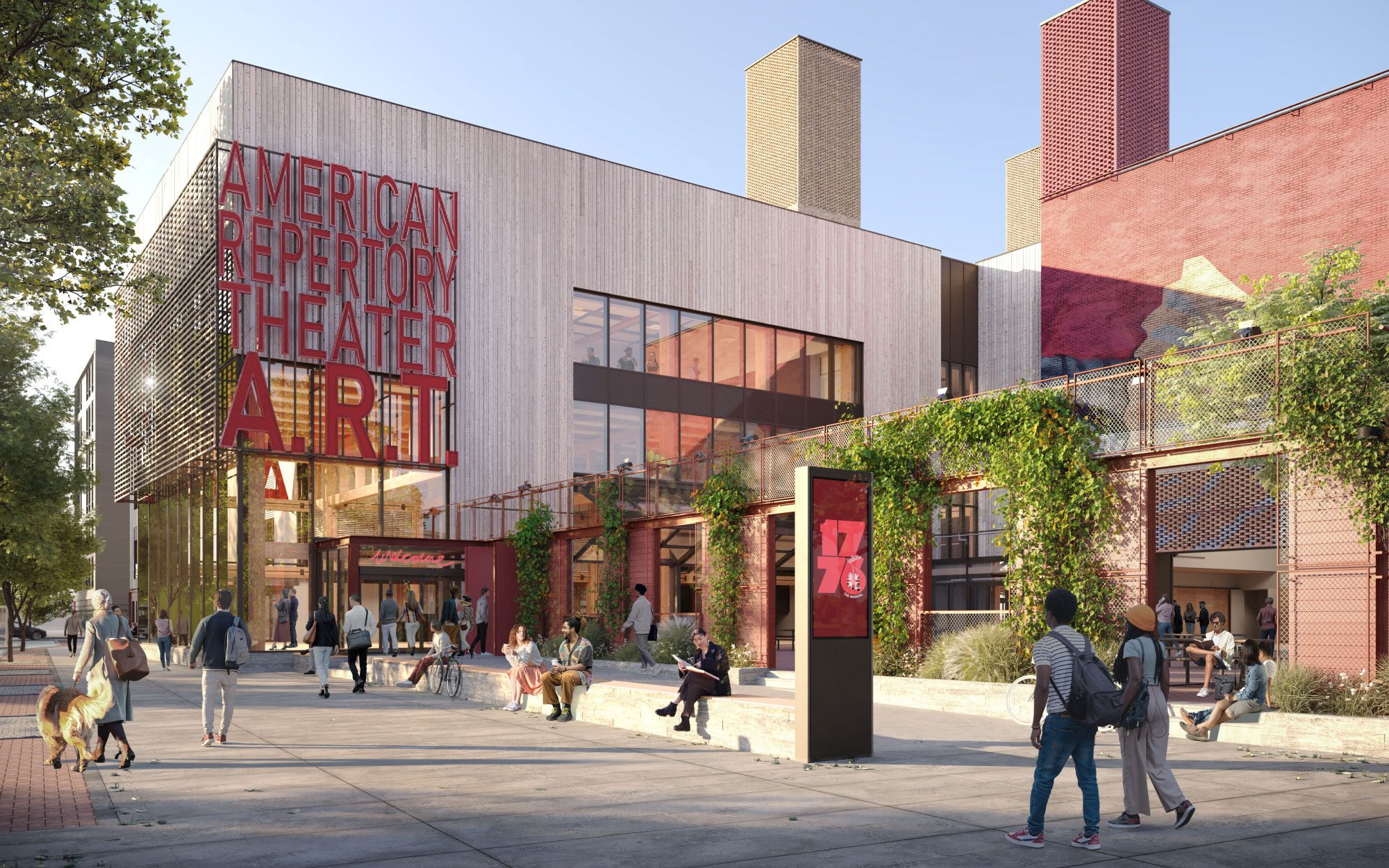The David E. and Stacey L. Goel Center for Creativity & Performance advances Harvard University’s ambitious sustainability priorities and is designed with a blend of environmental and social strategies to minimize embodied and operational carbon, maximize wellbeing, boost biodiversity, and enhance resiliency. This holistic approach to sustainable and regenerative design sets up the building to achieve Living Building Challenge Core accreditation from the International Living Future Institute, recognizing that it gives more to its environment than it takes.
A key driver of this commitment is the use of low-carbon, responsibly sourced materials. The building is constructed with laminate mass timber, reclaimed brick, and cedar cladding to minimize its lifetime carbon budget. More than 2,000 individual mass timber components have been installed, including columns, beams, floors, walls, stairways, and elevator shafts.
The building’s chilled water, hot water, and electric utilities will be supplied by Harvard’s lower-carbon District Energy Facility. Additional clean energy will be generated by rooftop solar panels, while natural ventilation will reduce energy use and enhance occupant comfort. A green roof and extensive plantings will aid stormwater attenuation, increase biodiversity, and promote occupant wellbeing.
The Goel Center is the first building in the US to be designed by the UK-based Haworth Tompkins, Architects’ Journal 2022 and 2020 AJ100 Practice of the Year and winner of the Royal Institute of British Architects 2014 Stirling Prize for its design of Everyman Theatre in Liverpool, England. The award is presented to the architects of the building that has made the greatest contribution to the evolution of architecture in the past year. Haworth Tompkins was selected by the A.R.T. for its experience with sustainable design and urban development, as well as approaches to democratizing the theatergoing experience and to the role that theaters can play within their communities.
A blend of peer review and scientific contributions from across Harvard University informed its rigorous design process. Members of The Harvard Healthy Buildings Academy, the Harvard Office for Sustainability, the Harvard T. H. Chan School of Health, the Arnold Arboretum, and the Harvard Graduate School of Design each contributed to the project.
